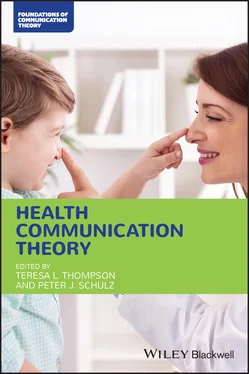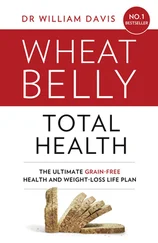26 Ellingson, L. L. (2007). The performance of dialysis care: Routinization and adaptation on the floor. Health Communication, 22(2), 103–114. doi:10.1080/10410230701453926
27 Ellingson, L. L. (2009). Engaging crystallization in qualitative research: An introduction. Thousand Oaks, CA: Sage.
28 Ellingson, L. L. (2011). The poetics of professionalism among dialysis technicians. Health Communication, 26(1), 1–12. doi:10.1080/10410236.2011.527617
29 Ellingson, L. L. (2017). Realistically ever after: Disrupting dominant narratives of long‐term cancer survivorship. Management Communication Quarterly, 31(2), 321–327. doi:10.1177/0893318917689894
30 Ellingson, L. L., & Borofka, K. G. E. (2014). Grounded theory. In T. L. Thompson (Ed.), Encyclopedia of health communication (pp. 537–538). Thousand Oaks, CA: Sage.
31 Ellingson, L. L., & Ellis, C. (2008). Autoethnography as constructionist project. In J. A. Holstein & J. F. Gubrium (Eds.), Handbook of constructionist research (pp. 445–465). New York, NY: The Guilford Press.
32 Ellis, C., Adams, T. E., & Bochner, A. P. (2011). Autoethnography: An overview. Historical Social Research, 36(4), 273–290.
33 Ellis, C., & Bochner, A. P. (2006). Analyzing analytic autoethnography: An autopsy. Journal of Contemporary Ethnography, 35(4), 429–449. doi:10.1177/0891241606286979
34 Evans‐Agnew, R. A., Boutain, D. M., & Rosemberg, M.‐A. S. (2017). Advancing nursing research in the visual era: Reenvisioning the photovoice process across phenomenological, grounded theory, and critical theory methodologies. Advances in Nursing Science, 40(1), E1–E15. doi:10.1097/ANS.0000000000000159
35 Fisher, W. R. (1984). Narration as a human communication paradigm: The case of public moral argument. Communication Monographs, 51(1), 1–22. doi:10.1080/03637758409390180
36 Fisher, W. R. (1987). Human communication as narration: Toward a philosophy of reason, value, and action. Columbia, SC: University of South Carolina Press.
37 Frank, A. W. (1995). The wounded storyteller: Body, illness, and ethics. Chicago, IL: University of Chicago Press.
38 Giddens, A. (1984). The constitution of society: Outline of the theory of structuration. Berkeley, CA: University of California Press.
39 Glaser, B., & Strauss, A. (1967). The discovery of grounded theory: Strategies for qualitative research. Chicago, IL: Aldine.
40 Goodall, H. L. (2004). Narrative ethnography as applied communication research. Journal of Applied Communication Research, 32(3), 185–194. doi:10.1080/0090988042000240130
41 Harter, L. M. (2013). The poetics and politics of storytelling in health contexts. In L. M. Harter & Associates (Eds.), Imagining new normals. A narrative framework for health communication (pp. 3–27). Dubuque, IA: Kendall Hunt.
42 Harter, L. M., Ellingson, L. E., Yamasaki, J., Hook, C., & Walker, T. (2020). Defining moments… Telling stories to foster well‐being, humanize healthcare, and advocate for change. Health Communication, 35, 262–267.
43 Harter, L. M., Japp, P. M., & Beck, C. S. (2005). Vital problematics of narrative theorizing about health and healing. In L. M. Harter, P. M. Japp, & C. S. Beck (Eds.), Narratives, health, and healing: Communication theory, research, and practice (pp. 7–29). Mahwah, NJ: Erlbaum.
44 Harter, L. M., Scott, J. A., Novak, D. R., Leeman, M., & Morris, J. F. (2006). Freedom through flight: Performing a counter‐narrative of disability. Journal of Applied Communication Research, 34(1), 3–29. doi:10.1080/00909880500420192
45 Jensen, R. E. (2015). An ecological turn in rhetoric of health scholarship: Attending to the historical flow and percolation of ideas, assumptions, and arguments. Communication Quarterly, 63(5), 522–526. doi:10.1080/01463373.2015.1103600
46 Jensen, R. E. (2016). Infertility: Tracing the history of a transformative term. University Park, PA: Pennsylvania State University Press.
47 Johnson, B. L., & Quinlan, M. M. (2019). You’re doing it wrong! Mothering, media, and medical expertise. New Brunswick, NJ: Rutgers University Press.
48 Kellett, P. M. (2017). Patienthood and communication: A personal narrative of eye disease and vision loss. New York, NY: Peter Lang.
49 Keranën, L. (2014). Rhetoric: Health and medicine. In T. L. Thompson (Ed.), Encyclopedia of health communication (pp. 1173–1175). Thousand Oaks, CA: Sage.
50 Keranën, L. (2015). Biopolitics, contagion, and digital health production: Pathways for the rhetoric of health and medicine. Communication Quarterly, 63(5), 504–509. doi:10.1080/01463373.2015.1103596
51 Kleinman, A. (1988). The illness narratives: Suffering, healing, and the human condition. New York, NY: Basic Books.
52 Lynch, J. A., & Zoller, H. (2015). Recognizing differences and commonalities: The rhetoric of health and medicine and critical‐interpretive health communication. Communication Quarterly, 63(5), 498–503. doi:10.1080/01463373.2015.1103592
53 Martin, S. C. (2016). The experience and communicative management of identity threats among people with Parkinson’s disease: Implications for health communication theory and practice. Communication Monographs, 83(3), 303–325. doi:10.1080/03637751.2016.1146407
54 Mattingly, C. (1994). The concept of therapeutic “emplotment.” Social Science & Medicine, 38(6), 811–822. doi:10.1016/0277‐9536(94)90153‐8
55 Miller, E. (2019). Too fat to be president? Chris Christie and fat stigma as rhetorical disability. Rhetoric of Health & Medicine, 2(1), 60–87. doi:10.5744/rhm.2019.1003
56 Miller, K. (2005). Communication theories: Perspectives, processes, and contexts (2nd ed.). Boston, MA: McGraw‐Hill.
57 Mocarski, R., & Butler, S. (2016). A critical, rhetorical analysis of Man Therapy: The use of humor to frame mental health as masculine. Journal of Communication Inquiry, 40(2), 128–144. doi:10.1177/0196859915606974
58 Ohs, J. E. (2020). Healthy mother, healthy baby: An autoethnography to challenge the dominant cultural narrative of the birthing patient. In P. Kellett (Ed.), Narrating patienthood: Engaging diverse voices on health, communication, and the patient experience (pp. 227–258). Lanham, MD: Lexington Books.
59 Pangborn, S. M. (2019). Narrative resources and unspeakable grief: Teens foster connection and resilience in family storytelling. Journal of Family Communication, 19(2), 95–109.
60 Peterson, J. L. (2010). The challenges of seeking and receiving support for women living with HIV. Health Communication, 25(5), 470–479. doi:10.1080/10410236.2010.484878
61 Poteat, T., German, D., & Kerrigan, D. (2013). Managing uncertainty: A grounded theory of stigma in transgender health care encounters. Social Science & Medicine, 84, 22–29. doi:10.1016/j.socscimed.2013.02.019
62 Quinlan, M. M., & Harter, L. M. (2010). Meaning in motion: The embodied poetics and politics of Dancing Wheels. Text and Performance Quarterly, 30(4), 374–395. doi:10.1080/10462937.2010.510911
63 Scott, B., Segal, J. Z., & Keranën, L. (2013). The rhetorics of health and medicine: Inventional possibilities for scholarship and engaged practice. POROI, 9(1), 1–6. doi:10.13008/2151‐2957.1157
64 Sharf, B. F. (1990). Physician–patient communication as interpersonal rhetoric: A narrative approach. Health Communication, 2(4), 217–231. doi:10.1207/s15327027hc0204_2
65 Sharf, B. F. (2001). Out of the closet and into the legislature: Breast cancer stories. Health Affairs, 20(1), 213–218. doi:10.1377/hlthaff.20.1.213
66 Sharf, B. F. (2017). Communicating health through narratives. In J. Yamasaki, P. Geist‐Martin, & B. F. Sharf (Eds.), Storied health and illness: Personal, cultural, and political complexities (pp. 29–52). Long Grove, IL: Waveland Press.
67 Sharf, B. F. (2019). On witnessing the precipice between life and death. Health Communication, 1–4. doi:10.1080/10410236.2019.1600102
Читать дальше












